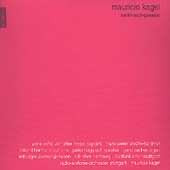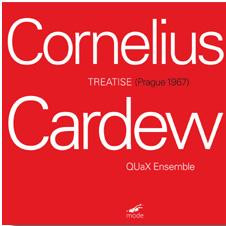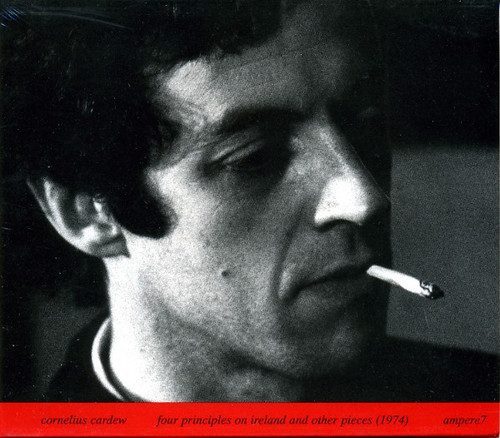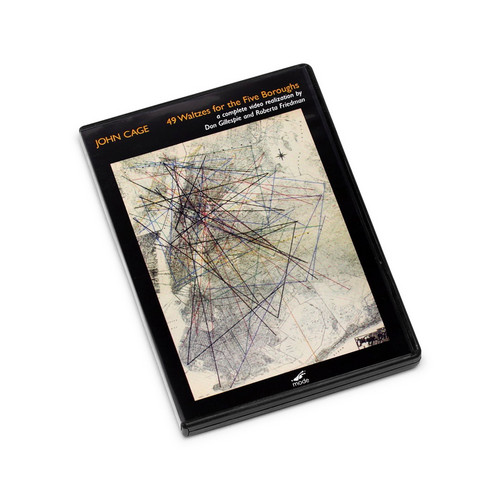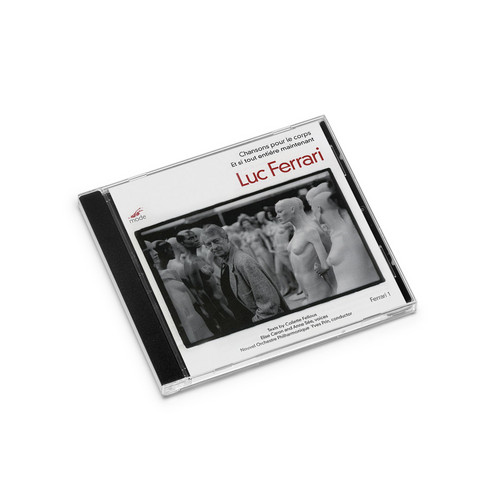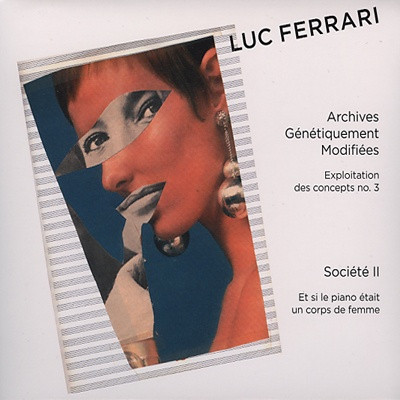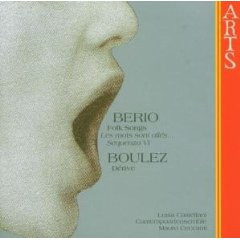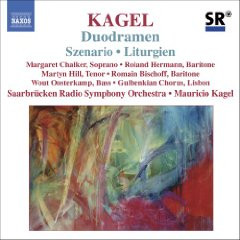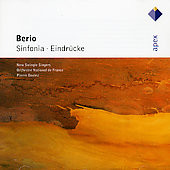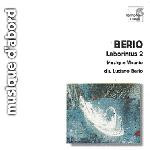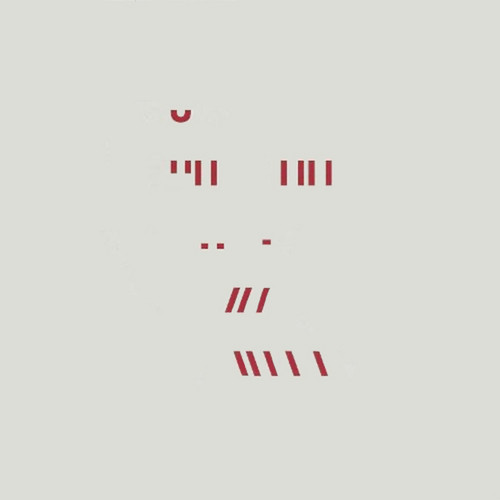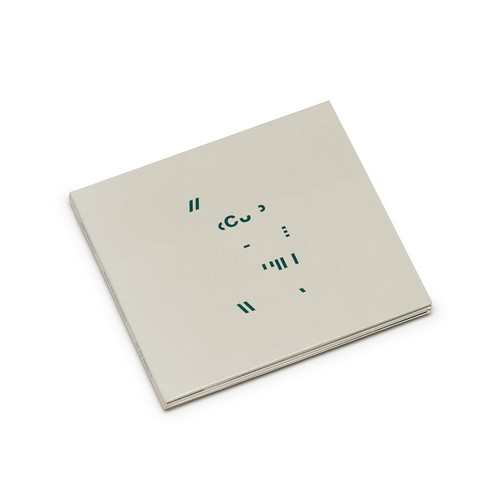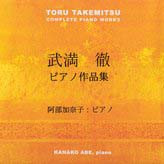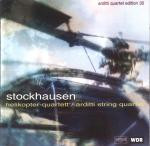Sankt-Bach-Passion
Mauricio Kagel (December 24, 1931 – September 18, 2008) was a German-Argentine composer who was notable for his interest in developing the theatrical side of musical performance. Many of his pieces give specific theatrical instructions to the performers, such as to adopt certain facial expressions while playing, to make their stage entrances in a particular way, to physically interact with other performers and so on. His work comparable to the Theatre of the Absurd.
Orchestral Works
Mauricio Kagel by himself: the composer, theater maker, filmmaker, virtuoso, writer of radio plays and, on the whole, all-round talent conducts his own works.
Sequenzas I-XIV (Complete)
Although he left an extended and varied output, including five major stage-works, several shorter dramatic pieces, a number of significant choral and orchestral works (not least the famous Sinfonia of 1968), and a sizeable body of instrumental and vocal pieces, the music of Luciano Berio is encapsulated in the Sequenza series running through 34 years of his creativity. Not only have many of them set standards for performance prowess and stamina, each embodies a redefining of the technical limits…
Etudes Australes
With a score derived from star maps - the "Atlas Australis", a book of maps of stars as they can be seen from Australia - and the "I Ching" (64-choice Old-Chinese chance manual) "Etudes Australes" is a quintessentially Cageian work. Grete Sultan is an active recitalist who has performed music both classic and contemporary around the world. "When I wrote the 'Sonatas and Interludes', it was with Maro Amian in mind", Cage said. "David Tudor was in my mind when I wrote the 'Music of Changes'. Witho…
The Great Learning
The Great Learning plays on the title of the influential score of the same name by the radical 60's composer and musician Cornelius Cardew, who brought music and visual art closely together in this work. The Great Learning [1969–1970] owe their visual eloquence to his practice as a graphic artist, and his improvisational and group work was made with an awareness and connection to Flux art. Facsimile of manuscript, size 420x263mm, 23 pages
Treatise (Prague Version, 1967)
Featured work: "Treatise (Live Recording, Prague 1967)." Performed by: QUaX Ensemble (Petr Kotik, Director). "This performance of Cardew's monumental 193-page graphic score 'Treatise' was recorded live in Prague in 1967 by the Czech QUaX Ensemble, directed by composer/flutist/conductor Petr Kotik. This historical recording offers a unique perspective to hear 'Treatise' as interpreted by Cardew's contemporaries. Kotik met Cardew in Warsaw in 1962, and they began exchanging scores by mail, includi…
Four Principles On Ireland And Other Pieces (1974)
...and Other Pieces" In 1975 when "Four Principles" was released, Cardew was comfortably within his third stylistic phase of musical development. Unlike the groundbreaking experimental activities introduced through his most famous pieces - "Treatise" & "Great Learning" - the music on here marked a repudiation of the musical avant-garde which Cardew himself had championed in England. 13 solo piano pieces represent a pivotal time in his work & can be heard is a return to the music Cardew knew & un…
49 Waltzes for the Five Boroughs
A complete video realization by Don Gillespie, Roberta Friedman and Gene Caprioglio. John Cage's artwork, "49 Waltzes for the Five Boroughs", appeared in the October 6, 1977 Rolling Stone magazine - a gala issue celebrating their move to New York. He constructed his "waltzes" through chance operations as a series of 49 multi-colored triangles superimposed on the Hagstrom map of New York City. Later, he published a score for "performer(s) or listener(s) or record maker(s)" with the exact street l…
Volume 1: Chansons Pour Le Corps
With recent releases on John Zorn's Tzadik label among others, Luc Ferrari is enjoying a well deserved renaissance. After studies with Messiaen and formative visits to Darmstadt in the '50s, Ferrari (born Paris, 1929), with Pierre Schaeffer, was one of the co-founders of the Groupe de Recherches Musicales in 1959. In the sixties he worked with the Ensemble Instrumental de Musique Contemporaine de Paris and made the first French television documentaries on new music, between 1964-69, he ta…
Archives Genetiquement Modifiees/Societe II
Archives Génétiquement Modifiées (2000). Société II (1967). Robot Records is honored and pleased to present two historic compositions for the first time on CD by the late, great Luc Ferrari. The programme opens with Archives Génétiquement Modifiées (Genetically Modified Archives), a work for memorized sounds from 2000. This composition (subtitled: Exploitation of the Concepts 3) was the third in a series of later pieces in which Mr.Ferrari revisited aspects of his early concepts and compositiona…
Folk Songs, Sequenza VI, Les Mots sont allés - Dérive
Folk Songs, written in 1964, has long been one of Berio's most popular works. A series of eleven songs for mezzo and chamber ensemble, it is couched in an accessible language with more than a hint of Stravinsky in the instrumentation. The songs here are not all folk songs: some are arrangements of popular songs in folk style and a couple are original Berio compositions, while the last song was transcribed from an old scratched 78 by the composer's then-wife Cathy Berberian. This performance, if …
Szenario - Duodramen - Liturgien
Mauricio Kagel is a conductor, writer, teacher and self-taught composer, initially influenced by avant-garde figures such as Boulez and Stockhausen. 'Szenario,' scored for string orchestra and tape, was conceived as an independent work, but quickly found a new role as musical backing to the Luis Bunuel/Salvador Dali silent classic 'Le chien andalou'. Duodramen can be heard either as an orchestral song-cycle in the tradition of Mahler or as an operatic 'final scene' in the tradition of Wagner or …
Sinfonia per 8 voci - Eindrucke
Luciano Berio was commissioned to write a work for the New York Philharmonic's 150th anniversary. What resulted was the Sinfonia, a masterpiece of the twentieth century musical movement. This work combines many of the Italian composers fascinations - from Mahler to Martin Luther King - and sympathizes them. The result is fascinating, stimulating, and thoroughly enjoyable. Boulez's interpretation is really top-notch. He leads the orchestra with great power, gusto, and energy. This vision is evide…
Laborintus 2
Music performed by the Ensemble Musique Vivante, laying down a turbulent racket of avant-crinkle, over which the 4-piece Chorale Experimentale bellows vocal confusion. Berio has also succeeded in discovering sounds, phrasings, effects of all kinds which have permitted him to venture further and further into areas which had so far been thought impermissible or impossible for the human voice. These investigations are magisterially reflected in the larger works and particularly in 'Laborintus II.
Voice, Books and Fire 3
An outstanding album, Voice, Books and Fire is the result of Jakob Ullmann reflections about the relationships between music and language: language as sound and language as text, the numerous relationships between texts of different cultural and religious traditions, between the work of the human spirit in the present and in the past and the questions arising from the problem of understanding these different traditions, languages and texts and representing them in a present, which has lost knowl…
Works for Instruments
Edition RZ presents John McGuire's Works For Instruments. Performers: Ensemble Modern -- Julia Rempe (soprano); Pellegrini-Quartett: Antonio Pellegrini, Thomas Hofer (violin); Fabio Marano (viola); Helmut Menzler (violoncello); musikFabrik: Hermann Kretzschmar, Paulo Alvarez, Irmela Roelcke, Eun-Ju Kim, Ulrich Löffler, Jürgen Kruse (piano), Christine Chapman, Jodie Lawson, Charles Putnam, Rohan Richards (horns), Dirk Rothbrust, Carlos Tarcha (percussion). Each of the compositions of post-minimal…
Corona - For Away - Piano Distance - Undisturbed Rest
Performed by Roger Woodward (piano). Recorded Decca Studio No.3, West Hampstead, London, 4 May 1973. This is the first International CD release featuring this recording. Was first released on Decca's HEAD label in 1974. For Takemitsu, sound can be beautiful without being significant, can signify beauty without making 'sense'. The quality of the music is thus elusive: it is not something one must necessarily 'understand', but perhaps rather absorb and accept. His works have, all the same, qualiti…
Complete Piano Works
Tōru Takemitsu was a Japanese composer and writer on aesthetics and music theory. Though largely self-taught, Takemitsu is recognised for his skill in the subtle manipulation of instrumental and orchestral timbre, drawing from a wide range of influences, including jazz, popular music, avant-garde procedures and traditional Japanese music, in a harmonic idiom largely derived from the music of Claude Debussy and Olivier Messiaen. In 1958, the international attention he drew with his Requiem for st…
Helikopter-Quartett
The Helikopter-Streichquartett (Helicopter String Quartet) is one of Karlheinz Stockhausen's best-known pieces, and one of the most complex to perform. It involves a string quartet, four helicopters with pilots, as well as audio and video equipment and technicians. It was first performed and recorded in 1996. Although performable as a self-sufficient piece, it also forms the third scene of the opera Mittwoch aus Licht ("Wednesday from Licht"). The Helicopter Quartet was originally commissioned b…
Como Una Ola De Fuerza Y Luz / Sofferte Onde Serene / Contrappun
Luigi Nono began Como una ola de fuerza y luz (Like a wave of strength and light) as a piece for piano and orchestra in 1971, at the instigation of Maurizio Pollini. While the composition was in progress, Nono learned of the death of a young Chilean revolutionary and recast the work in his memory, with added parts for soprano soloist and tape. The resulting half hour work is clearly a lament, encompassing various expressions of grief, from stunned sorrow to anguish to the fiercest rage. As a kin…
